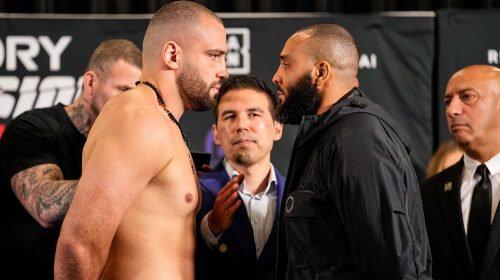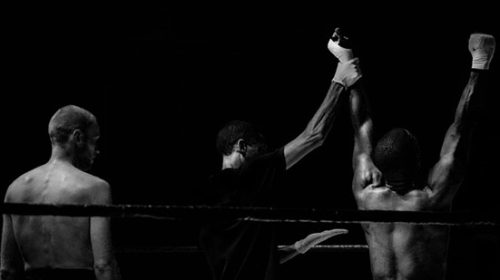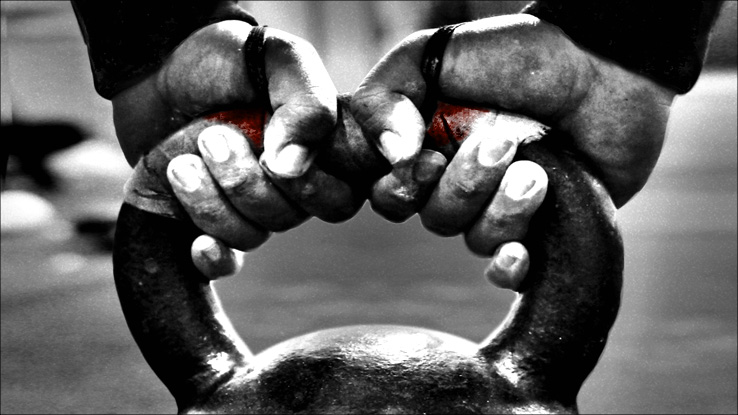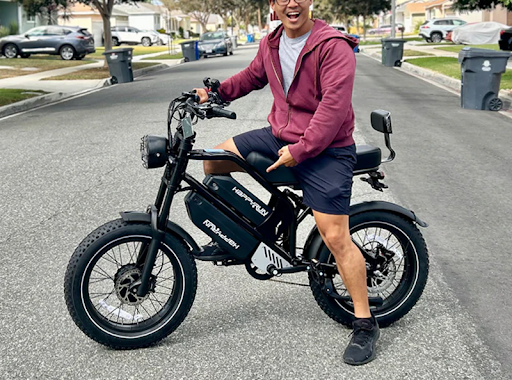
Is Lifting Heavy Good for Fighting?
Be it MMA fighters, boxers, grapplers, or sumo wrestlers, they all train their physical strength as part of their training regimens. While technique and practice take the lead in terms of importance, they still need immense strength to carry out their moves and takedowns well. So, if you’re grappling with the question (pun intended), “Is lifting heavy good for fighting?”, you’re in the right place.
It’s an age-old debate with skeptics and proponents on each end of the spectrum. This article aims to have an unbiased view of this question, dissecting the many intricacies of the discussion. We’ll explore all the benefits that a fighter can have by lifting heavy weight, as well as its potential drawbacks (if any) within the context of combat sports. 3, 2, 1 — let’s begin.
Strength Training — Understanding the Basics

Before we look into the correlation between fighting and lifting heavy, let’s understand what strength training is all about. Essentially, the goal is to put on additional muscle mass. Lifting weights is just one of many ways to train strength. With different exercises targeting specific muscle groups, weightlifting provides the body with ‘stimulus’, which in simple words means a reason to grow.
It’s carried out on the principle of progressive overload, which means your training gets tougher each session one way or the other. This could be through doing more reps, more sets, or lifting more weight. For example, let’s assume you deadlifted 200 pounds for 3 sets of 8 reps today. The next time you throw your straps on for a deadlift, you’d either up the weight, the reps, or the sets.
The more you challenge your muscles, the more they grow — assuming all other requisites are also met such as proper diet, hydration, and rest.
Hearing out the Proponents

As mentioned in the beginning, there are proponents and skeptics to the discussion of whether fighters should lift heavy. Let’s first look at the advocates of this idea.
According to them, strength gains translate to a valuable competitive advantage in combat. Getting stronger would mean more powerful strikes, i.e. stronger kicks, punches, and takedown ability. This also means higher chances of landing a knockout blow.
Additionally, pumping iron can also enhance muscular endurance. This allows fighters to put out heavy-duty performance sustainably over longer periods. If a match goes the full distance until the last round, this heightened stamina could make all the difference in clutching a victory in sports like wrestling, boxing, or MMA.
On top of improved striking and stamina, fighters can also reduce and prevent injuries by strengthening their ligaments, tendons, and muscles. Fighters who regularly lift weights may therefore be at a lower risk of developing sprains, strains, or fractures. And in combat sports, the fewer your injuries, the longer your career can last.
And lastly, the proponents argue that weightlifting not only makes you stronger physically but also mentally. Progressively overloading the muscles and constantly overcoming resistance-based challenges helps build a tougher mindset. It instills core values of determination, perseverance, and patience. These are all characteristics of a warrior that can be priceless in challenging fights.
Skeptics’ Perspective

Having looked at the proponent’s perspective, it may seem like lifting heavy weights should be a no-brainer for fighters. So, why don’t some of them do it? Well, let’s now hear out the skeptics.
They believe that there are considerable drawbacks to heavy-weight training for fighters, and they far outweigh the potential benefits. While the fighters may get stronger as a result of it, they would also bulk up and lose out on speed and agility — qualities that are just as useful in combat, if not more. They argue that excessive muscle mass on a fighter can not only be useless, but counterproductive as it slows the person down and compromises fluidity. These arguments could be valid since quicker movement does improve a fighter’s ability to evade attacks and counter them.
Plus, as per the principle of opportunity cost, time spent on lifting weights could instead be spent on other aspects of training like improving the fighter’s technique, strategy, timing, and execution. Even the skeptics accept the importance of strength in a fighter, but they say that overemphasis on it can lead to other — more important aspects — being neglected or compromised.

Weight training can also sometimes lead to muscular imbalances, which is another major talking point for the skeptics. Certain single-plane exercises like pushups or squats can cause muscle imbalances, especially if not paired with appropriate flexibility training or complementary movements, can cause imbalances in the body. This could arguably make a fighter less mobile and agile, and more susceptible to injuries.
There’s also the question of fatigue buildup. Hypertrophy training that involves lifting heavy weights is incredibly taxing on one’s body. It requires a lot of rest for the body to carry out protein synthesis and build muscle. This may not match up too well with an already tiresome training routine of a fighter. As a result, the fighter would either have to cut back on fight training or become more susceptible to injuries — which may be a lose-lose scenario.
Lastly, based on the concept of functional strength, skeptics question the significance of these weight-lifting strength gains in unpredictable fight scenarios. They claim that simply lifting a lot of weight in a controlled, favorable environment of the gym wouldn’t necessarily make you strike harder or grapple better.
Conclusion — Finding a Middle Ground

While both ends of the discussion have strong arguments, the conclusion doesn’t have to be extreme. There’s thankfully a middle ground that recognizes the potential benefits of weightlifting for fighters and also acknowledges its associated risks for combat athletes. Coaches therefore commonly take a balanced approach by including a moderate volume of strength training into the fighters’ overall combat sports regimen.
This means not overdoing it and avoiding muscular imbalances through flexibility training and complementary movements. Fighters should also focus on exercises that build functional strength which directly leads to improved performance in specific fight-related skills and movements.
With a more nuanced approach, combat athletes can get stronger through weightlifting without sacrificing their balance, agility, or flexibility. At the end of the day, the same rules apply as with any other training aspect — consistency and moderation are key principles to make the most out of your efforts. All the best!


























